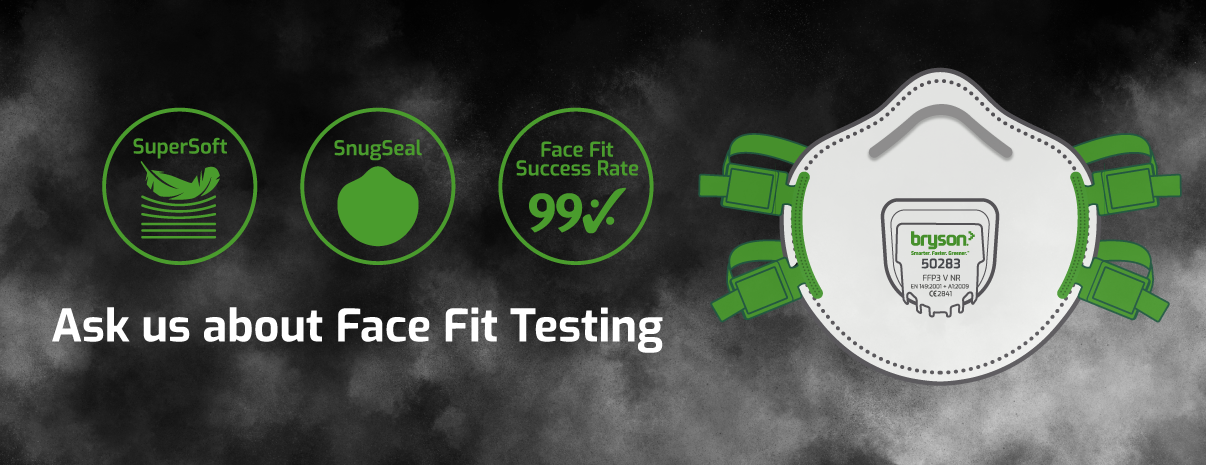
Why Should We Conduct Face Fit Testing?
Each year in Britain, the HSE estimate 12,000 people die from Occupational Lung Cancer caused by exposure to hazardous substances such as silica, asbestos, wood & welding fumes. It’s a legal requirement under the COSHH Regulations that all workers wearing tight-fitting Respiratory Protective Equipment (RPE) should be face fit tested by a competent person.
Tight-fitting RPE, such as disposable FFP3 masks, and reusable half masks, rely on having a good seal with the wearer’s face.
To ensure that RPE will protect the wearer:
• The wearer must be clean shaven to achieve a good seal between the tight-fitting respirator and the wearer's face. This prevents inward leakage of contaminated air from around the edges of the face seal being breathed into the lungs.
• Face fit tests should not be conducted if there is any hair growth between the wearer's skin and face-piece seal, including stubble beard growth, beard, moustache, sideburns or a low hairline.
It is also very important that RPE is worn correctly and checked for a good fit every time it is put on. Staff training can ensure that RPE is worn correctly each and every time.
How can you be sure your RPE is fit for purpose?
By ensuring your RPE is fit tested by an accredited provider, you can guarantee your RPE will be fit for purpose and protect your employees' long term health.
What is an Accredited Provider?
Face Fit Testing is run by the BSIF (British Safety Industry Federation) and approved by the HSE as the competency level for RPE face fit testing and training
Contact Bryson for more details.

